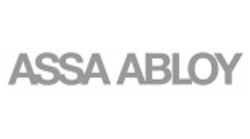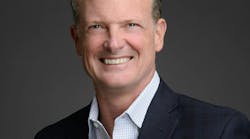Today’s market forces are driving architects and engineers to focus on designing, constructing and renovating buildings and systems with sustainability goals top of mind. This presents both a challenge and an opportunity for security dealers and integrators to provide significant value to their customers while driving their own business growth and profitability at the same time. Sustainability objectives include addressing energy conservation, environment and occupant health, safety and security.
There is currently a need for a deeper understanding of sustainability within the security industry among end-users, dealers and integrators alike. For those who take the time to understand the goals of sustainability and the products and best practices being deployed, they will be able to provide a unique level of value to their customers and distinguish themselves from the competition.
Market Differentiator
Sustainability offers the opportunity for security integrators to have a new conversation with their customers. This means first understanding why sustainability is important and how innovative new products can help customers achieve their goals. Integrators often struggle with how to present this value effectively – because sustainability is a bit out of their comfort zone, they are wary of asking questions of their customers related to their sustainable initiatives. Still, these are important discussions.
Within the security industry, there are not many manufacturers talking about the benefits of “green” or sustainable products and practices. Sustainability provides a high level of value to the end-user community today that is continuing to increase.
Clear indicators of this are in the construction market, where security integrators can play an important role in providing solutions contributing to a building’s LEED (Leadership in Energy and Environmental Design) certification. According to the U.S. Green Building Council 1.85 million square feet per day receive LEED certification every day.
There is a real opportunity for the security dealer/integrator who is able to discuss sustainability and translate that value into dollars and cents for the end-user. For customers, sustainability is no longer a just a nice-to-have feature – end-users are seeing tangible savings from using sustainable products.
As a systems integrator, it is critical to understand how the market is changing, and then take those trends and incorporate them into your business strategy. That is where the gap is right now.
Total Cost
Cost is somewhat relative – many factors, such as the cost of materials, labor and energy consumption contribute to a solution’s total cost of ownership for the end-user; however, there are other important considerations that are often overlooked. For example, sustainable access control solutions such as integrated Power over Ethernet (PoE) locks enable facilities to re-use existing network infrastructure, thereby increasing the utility of other investments and lowering the total cost of ownership through lower installation and reduced energy costs.
The ability to re-use existing infrastructure can reduce costs up to 70 percent per opening as compared to traditional access control solutions. In addition, energy-efficient solutions can provide up to 96-percent recurring energy savings per opening.
With access control, the integrator is accustomed to doing things in a conventional way. Until the value of sustainable practices like reducing both infrastructure and energy consumption is truly understood, it can be difficult to convince them to change. Truly tangible benefits like lower costs and greater value from existing investments give you the opportunity to change the conversation beyond just the cost of the hardware.
As more and more sustainable elements are being built into the manufacturing process, solution costs have come down dramatically and will continue to do so. If it costs virtually the same to use sustainable solutions as the conventional alternative, then why wouldn't you, as the integrator, want to communicate that story to the end-customer? The ability to provide greater efficiencies increases your value as a trusted partner and advisor to your customer.
Sustainable Products
Door opening solutions have always provided for security, life safety and the convenience of building occupants, but in the past decade, they have evolved to address sustainability. The demand for products that meet this need is significant and is tied to the rise of green building rating systems like LEED and the Living Building Challenge. These voluntary green building certification systems have become part of code through the IGCC and Net Zero Energy Building initiatives passed by state and federal government.
A range of new products are available today to assist progressive buildings in the categories of energy efficiency, sustainably sourced materials, indoor environmental quality as well as innovation and design considerations. A few key examples include:
- Integrated PoE locks combine all access control functionality into the lock and use existing network cabling for both power and data. This reduces components and provides maximum energy efficiency – drawing significantly less power in standby mode than traditional access control installations.
- WiFi access control solutions leverage current 802.11 WiFi infrastructures, offer the same reduction of components as PoE and optimize power consumption for long battery life.
- Eco-friendly electrified mortise locks reduce energy consumption up to 96 percent as compared to standard electrified mortise locks.
- Eco-friendly access control power supplies can reduce power supply standby consumption by more than 99 percent as compared to current generation access control switching power supplies.
- Sustainable door opening solutions include a range of high-performance exterior and interior door equipment available for today's green buildings. Openings that deliver tested thermal transmission and air leakage requirements will meet the most stringent LEED, ASHRAE or other code requirements. This level of energy, air leakage, and STC performance requires integrated product solutions that specify doors, frames, gasketing, door bottoms, thresholds, closers and hardware.
Join the Discussion
The interest in sustainability is growing exponentially. Imagine a new security integrator starting a business today – their business focus could easily be based entirely on IP system integration, PoE powered solutions, data sharing and connectivity, and all the disciplines of helping customers achieve their green and sustainability goals.
All security dealer/integrator businesses today – new or established – must be able to have an intelligent discussion with their customers about the many benefits of sustainable access control.
Mark Duato is Vice President of Integration Solutions for ASSA ABLOY. To request more info about the company, visit www.securityinfowatch.com/10212899.



